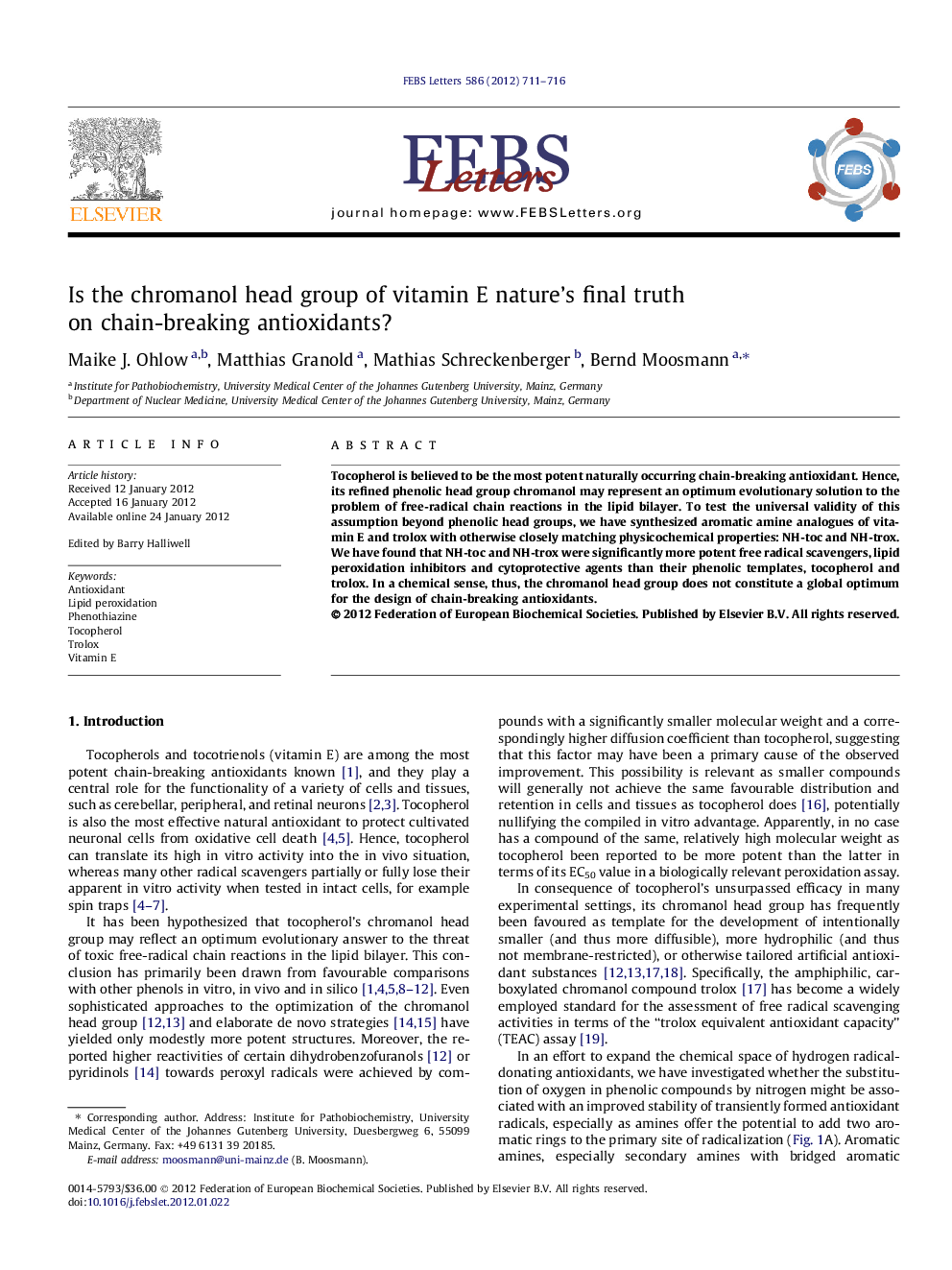| Article ID | Journal | Published Year | Pages | File Type |
|---|---|---|---|---|
| 2048487 | FEBS Letters | 2012 | 6 Pages |
Tocopherol is believed to be the most potent naturally occurring chain-breaking antioxidant. Hence, its refined phenolic head group chromanol may represent an optimum evolutionary solution to the problem of free-radical chain reactions in the lipid bilayer. To test the universal validity of this assumption beyond phenolic head groups, we have synthesized aromatic amine analogues of vitamin E and trolox with otherwise closely matching physicochemical properties: NH-toc and NH-trox. We have found that NH-toc and NH-trox were significantly more potent free radical scavengers, lipid peroxidation inhibitors and cytoprotective agents than their phenolic templates, tocopherol and trolox. In a chemical sense, thus, the chromanol head group does not constitute a global optimum for the design of chain-breaking antioxidants.
► Quantum chemical calculations indicate that even refined phenols like chromanol may be suboptimal antioxidants. ► Aromatic amine (NH) analogues of two chromanols, tocopherol and trolox, were synthesized and evaluated. ► NH-toc and NH-trox were found to be distinctly more potent antioxidants than their phenolic counterparts. ► The evolutionary fixation of tocopherol as primary chain-breaking antioxidant may reflect an event of metabolic coevolution.
